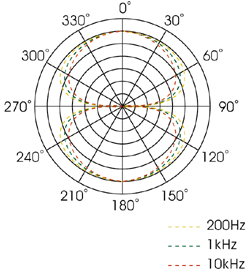Feadoggie wrote:The figure eight pattern is one of the hallmarks of ribbons. You just need to care for reflections hitting the rear.
Right but what I said wasn't a criticism of ribbons. I should have been more clear if you read it that way. I was just pointing out the pitfalls for someone new to them.
Feadoggie wrote:But dual diaphragm condensers do the same. So that's not limited to ribbons is it?
Actually, the polar patterns are quite different. Dual diaphragm condensers pick up a lot of sound from the side whereas a ribbon picks up sound mostly back and front.
Take a look at these:


The first is an AT4047/SV dual diaphragm; the second a Royer R-121 ribbon. At 180, you can see the 4047 is barely getting a signal while the 121 is taking in about as much from the back as it does from the front.
Feadoggie wrote:It's nice to hear that you like the Blue Woodpecker, JTC111. Have you tried any of the Cascade ribbons? I am looking for something to better pick up the high-end sparkle of my resonator and other acoustic lap guitars.
The Woodpecker would be very nice for that purpose. What are you using now?
I mix things up on guitar tracks depending on what I'm looking for, but it's usually some combination of these:
a pair of ADK A6 (cheap as chips at $250 each and really nice on acoustic guitar if you want a natural sound)
Earthworks SR30 (another good choice for high end sparkle)
BLUE Woodpecker
Run them through a John Hardy M1 mic pre and you're golden.
I've never used a Cascade but from what I've read about them, they benefit from some modding. IIRC, some folks were putting Lundahl transformers in the Fatheads and swapping out the ribbons for something thinner, after which they raved about them.

